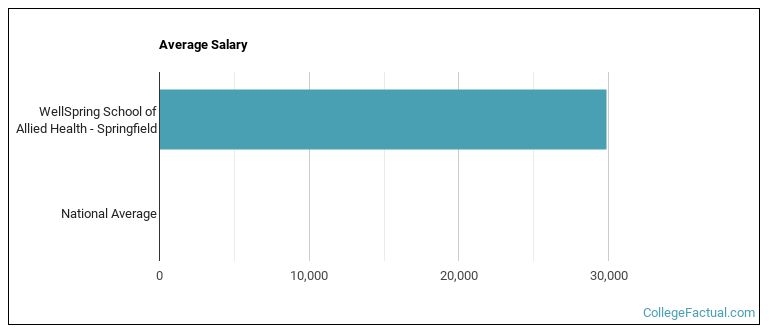 by our College Data Analytics Team
by our College Data Analytics TeamExplore the best ranked schools for the programs you are most interested in.
WellSpring - Springfield was not ranked in College Factual's 2025 Best Overall Colleges report. This could be for a number of reasons, including lack of data.
See all of the rankings for WellSpring School of Allied Health - Springfield.
Returning adults and other non-traditional students may appreciate the fact that WellSpring School of Allied Health - Springfield has an open admissions policy. This means that you'll only have to submit basic materials, which may include proof that you completed high school or an equivalent program.
At WellSpring - Springfield, the student to faculty ratio is an excellent 10 to 1. That's much better than the national average of 15 to 1. This indicates that many classes will probably be small, and students will have ample opportunites to work closely with their professors and classmates.
WellSpring School of Allied Health - Springfield has a freshmen retention rate of 83%. That's a good sign that full-time students like the school and their professors enough to want to stick around for another year. It's also a sign that the admissions team did a good job in choosing applicants who were a good fit for the school.
During the 2017-2018 academic year, there were 80 full-time undergraduates at WellSpring - Springfield.
| $0-30 K | $30K-48K | $48-75 | $75-110K | $110K + |
|---|---|---|---|---|
| $21,796 | $22,562 | $23,047 | $23,743 | $26,508 |
The net price is calculated by adding tuition, room, board and other costs and subtracting financial aid.Note that the net price is typically less than the published for a school. For more information on the sticker price of WellSpring - Springfield, see our tuition and fees and room and board pages.
While almost two-thirds of students nationwide take out loans to pay for college, the percentage may be quite different for the school you plan on attending. At WellSpring - Springfield, approximately 85% of students took out student loans averaging $7,856 a year. That adds up to $31,424 over four years for those students.
Get more details about paying for WellSpring School of Allied Health - Springfield.

See which majors at WellSpring School of Allied Health - Springfield make the most money.
Get more details about the location of WellSpring School of Allied Health - Springfield.

Contact details for WellSpring - Springfield are given below.
| Contact Details | |
|---|---|
| Address: | 3033 S Kansas Expressway, Springfield, MO 65807 |
| Phone: | 417-863-7682 |
| Website: | www.wellspring.edu/ |
| Most Popular Majors | Bachelor’s Degrees | Average Salary of Graduates |
|---|---|---|
| Somatic Bodywork & Therapeutic Services | 59 | NA |
| Allied Health & Medical Assisting Services | 9 | NA |
Footnotes
*The racial-ethnic minorities count is calculated by taking the total number of students and subtracting white students, international students, and students whose race/ethnicity was unknown. This number is then divided by the total number of students at the school to obtain the racial-ethnic minorities percentage.
References
More about our data sources and methodologies.